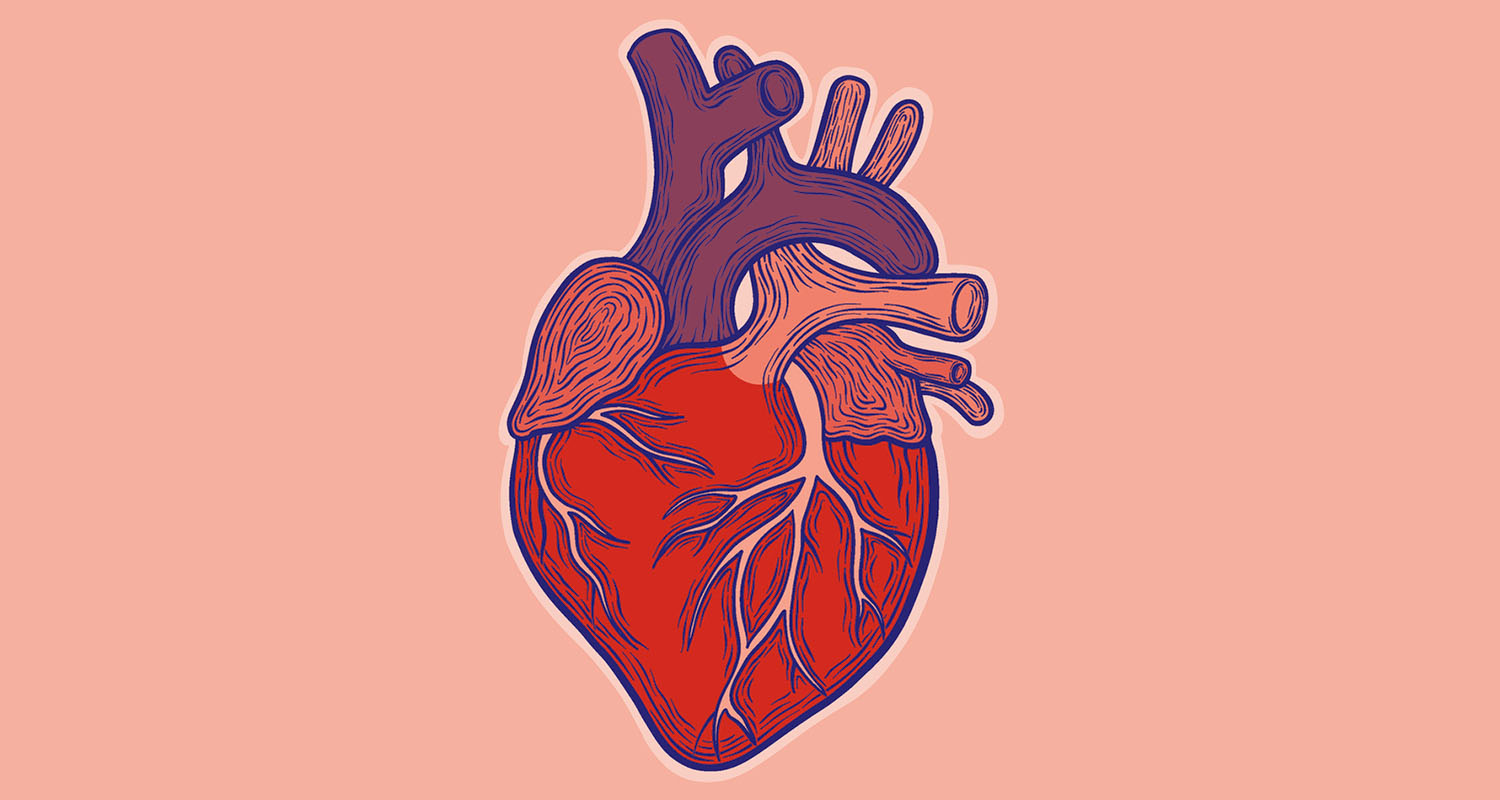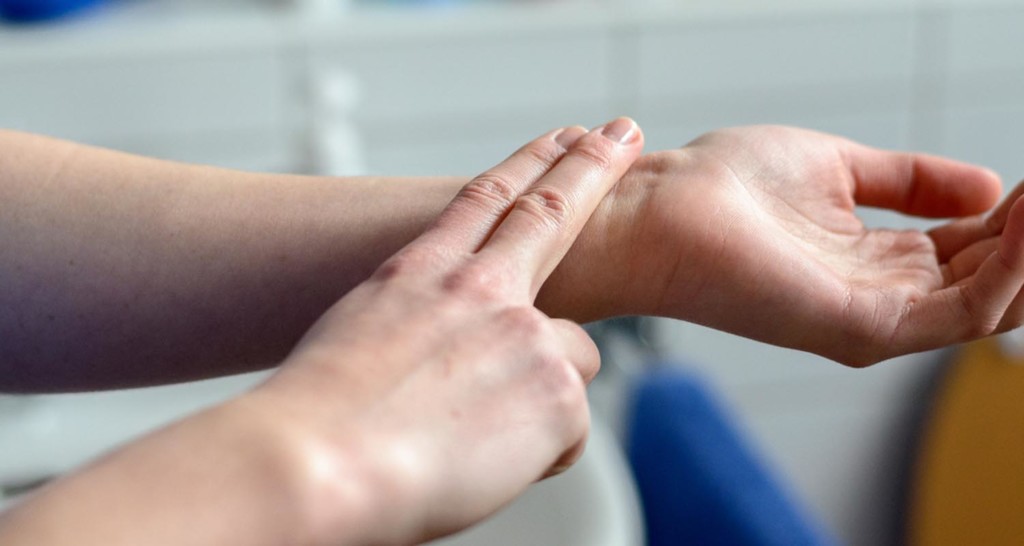
[tldr]
- POTS, or postural orthostatic tachycardia syndrome, is a disorder of the autonomic nervous system, the part of your brain and nerves that control things you don’t think about, like heart rate, breathing, and blinking.
- With POTS syndrome, your heart rate increases when you go from sitting to standing or lying down to standing. Essentially, your body doesn’t maintain blood pressure with big shifts, and your heart has to pump faster to keep up.
- Symptoms include nausea, dizziness, fainting, chest pain, fatigue, and more.
- POTS is a frequently missed diagnosis, because symptoms are common to other things, typical doctors aren’t familiar with it, and because of an tendency in medicine to discount the symptoms of young women.
- Read on to learn more about POTS, how to test yourself for POTS, and how to talk to your doctor about it.
[/tldr]
People turn to biohacking for all kinds of reasons. A big reason why people decide to start researching and taking control of their own biology is knowing that something is terribly wrong, while doctor after doctor dismisses symptoms as hypochondria, depression, anxiety, or age. That’s what happened to Tori Foles, POTS advocate and wife of Superbowl LII MVP Nick Foles, and countless others who are dealing with postural orthostatic tachycardia syndrome, or POTS. Read on to learn more about her experience, and the best treatment for POTs.
RELATED: Get free recipes, ebooks, guides and more to supercharge your health.
What is postural orthostatic tachycardia syndrome, or POTS?
POTS is a disorder of the autonomic nervous system, the part of your brain and nerves that control things you don’t think about, like heart rate, breathing, and blinking. With POTS, your heart rate increases when you go from sitting to standing or lying down to standing. Essentially, your body doesn’t maintain blood pressure with big shifts, and your heart has to pump faster to keep up.[ref url=”https://www.ncbi.nlm.nih.gov/pubmed/25546918″]
POTS symptoms
More than likely, you don’t notice changes in your heart rate. Instead, when you’re having an episode, you notice other symptoms ranging from mild to severe. Symptoms[ref url=”http://www.dysautonomiainternational.org/page.php?ID=30″] include any combination of the following:
- Drop in blood pressure when going from sitting or lying to standing
- Increase in blood pressure when going from sitting or lying to standing
- Increase in heart rate when going from sitting or lying to standing
- Low blood volume
- High levels of norepinephrine when standing (from the body’s fight-or-flight response activating in response to not enough blood to the brain)
- Peripheral (not brain or spinal cord) nerve damage
- Fatigue
- Headaches
- Lightheadedness
- Vertigo
- Shaking
- Fainting
- Heart palpitations
- Chest pain
- Shortness of breath
- Nausea
- Exercise intolerance
- Brain fog, attention trouble
- Feeling cold, especially in hands and feet
- Flushed or purple color in the lower legs when going from sitting or lying to standing
You can have symptoms that do not appear on a typical list. There’s a wide range of magnitude, too. Foles explains, “There’s a range of severity, from somebody in a wheelchair, or stuck in bed, to somebody who runs marathons.”
What causes POTS?
POTS itself isn’t a disease — it is a syndrome (a group of symptoms) that always has an underlying cause. If you get diagnosed with POTS, your doctor may link it to a condition you already have, like diabetes or alcoholism.
You may have a condition that causes POTS without knowing it, like heavy metal toxicity. Or, the condition might follow exposure to certain types of medications or vaccinations.[ref url=”https://www.sciencedirect.com/science/article/pii/S0264410X15004375″][ref url=”https://onlinelibrary.wiley.com/doi/full/10.1111/ene.12272″][ref url=”http://www.dysautonomiaclinic.com/articles/Gardasil_and_POTS.pdf”] If your doctor cannot pinpoint the cause, she will label your variation of POTS as Primary or idiopathic POTS.
You can get a list of diseases and conditions that cause POTS here, although it’s a partial list; research on POTS is developing and scientists are making more linkages every day.
POTS testing and diagnosis
Here comes the tricky part.
Getting a good diagnosis depends heavily on the combination of symptoms you have, and the individual doctor’s experience with POTS.
If you make a doctor’s appointment because you’re tired all the time, you get winded easily, and you get headaches, most doctors won’t put the pieces together right away. A lot of symptoms of POTS point to other conditions. Or, your symptoms will tell the doctor that you simply need more sleep or exercise.
Even when your symptoms seem obvious to a neurologist with a lot of experience with POTS patients, there’s a good chance your primary care doctor either hasn’t heard of it or has never treated someone with it. And since most insurance plans require you to go through your primary doctor for everything, you don’t get a proper referral.
POTS is listed as a rare disease, but as knowledge around POTS is developing, it’s looking less like a rare disease and more like something doctors fail to diagnose.
Lauren Stiles, Esq., president of Dysautonomia International, points to gender discrimination, coupled with the fact that POTS affects 90-95% young women, as the reason why doctors frequently miss POTS. She explains:
“When you have an illness that’s primarily impacting young women, there’s a tendency in medicine to dismiss symptoms as just hysterics, as PMS, as anxiety,” she says, adding that it’s not in fact a psychological disorder. Rather, POTs is an “autonomic nerve disorder and it can be distinguished from psychological problems.”
“I felt nauseated and tired”
Foles suspected something was wrong when she started feeling nauseated and lightheaded at a concert. She recalls, “Every day after [the concert] I kept feeling nauseated and tired. One morning after a spin class, I was driving to work and I almost fainted. I went straight to the doctor from there, a general practitioner that I’d seen a few weeks before for ear pain. The doctor said it was probably the virus I came in with a few weeks ago, and that viruses can last a month or more. He said I seemed anxious, and started asking me about anxiety and depression. I’d never thought about anxiety or depression before. Looking back, I thought, of course I seemed anxious. I almost passed out while driving.”
Foles only found out what was going on because she talked to her aunt, a physician’s assistant for a neurologist, about her symptoms. Her aunt suspected POTS, and had her do the poor man’s tilt test — more on that coming up. You can hear more about Tori’s experience with POTS on the episode of Bulletproof Radio featuring Nick Foles (iTunes), or get all the details on her blog.
Between symptoms that point to other things, doctors’ lack of familiarity with it, and a general medical bias against young women — it’s the perfect storm that results in an average of 10 years’ lag time from symptom onset to diagnosis. According to Dysautonomia International, a POTS patient sees an average of seven physicians before they get a diagnosis, and 25% see over 10 physicians before they find out they have POTS.
At-home test for POTS
You can’t diagnose yourself, but you can do the same test that general practitioners do in the office, called the “Poor Man’s Tilt Test,” no equipment required. Stiles explained how to do it:
- Lie down. Really relax and be still without talking. Hooking up to a pulse oximeter (they run about $15 online) is ideal because you don’t have to move your arms, but if you don’t have one, get in position to take your pulse at your wrist and make sure you can see a timer without moving. Better yet, have someone take your pulse for you.
- Check your heart rate. After you’ve been still for 5-10 minutes, count your pulse for 15 seconds, and multiply that by 4 to calculate your beats per minute.
- Stand up. Be perfectly still, and be especially careful not to move your legs, because moving your legs changes your blood flow.
- Check your heart rate again. Take your pulse at 3, 5 and 10 minutes standing.
- Compare. If your heart rate rises by 30 beats per minute and returns to the rate you got when you were lying down, that’s not POTS. If your heart rate stays elevated by 30 beats per minute or continues to rise, and if you feel symptoms (lightheadedness, nausea, dizziness) while standing, bring your results to your doctor and ask to do a formal test for POTS. Ask for a referral to a specialist, usually a neurologist or an autonomic specialist, who can do a proper Tilt Table Test.
Even if your heart rate stays where it should, but you have symptoms, you can have the doctor do a more accurate test in the office to be sure.
It never hurts to get the conversation going, and a good doctor will never make you feel less than, or imply that you’ve been self-diagnosing on the Internet, for inquiring about a condition and finding out you do not have it. Good doctors appreciate informed discussion and will fill in the gaps.
The Tilt Table Test for POTS
The real Tilt Table Test happens at the doctor’s office. It involves hooking up to continuous blood pressure and heart rate monitors, and strapping down on a table that tilts you at various angles while the computer records your heart rate and blood pressure changes. You may also get an IV of medication for later phases of the test to measure response.
POTS treatment
Some people are diagnosed with mild POTS at a young age, and they outgrow it.
Others work with their doctors to come up with a plan to manage symptoms. Depending on the type of POTS you have, symptoms can improve with things like:
- Increasing fluid and electrolyte intake to keep blood volume higher
- Sleeping at a slight incline
- Exercise, to keep blood flowing
- An anti-inflammatory diet, because of the autoimmune connection in a portion of POTS sufferers
- Avoiding known symptom triggers
- Wearing compression stockings
- Prescription medications
How Tori Foles controls her POTS symptoms
As a mom to a little girl with a husband who travels a lot, Foles has plenty of motivation to take control of her POTS so it doesn’t rule her life. Here are a few things she does that make an impact:
- Hydrate. She takes salt tablets, and she consumes much more water than the average person would.
- Consistent exercise. Foles says, “You could be in a wheelchair with POTS, and your doctor will tell you that you have to find a way to exercise. It’s that crucial.”
- Meditation. Foles does a couple restorative yoga classes in a week or a short meditation practice daily. “This helps calm the brain/ sympathetic nervous system and is also huge for me. The brain tells the body what to do so working on it through meditation makes so much sense to me.”
- Spirituality. “The other biggest thing for me (I know this is more personal but it’s huge) has been my faith through the whole process. Trusting and believing that the Lord has a greater plan for me and my struggles has allowed me to continue to move and do the hard work it takes to continue to get better.”
- Learn about your body. Foles’ condition motivated her to become a certified health coach, and she believes that diet helps keep her body systems as strong as they can be, which keeps her symptoms to a minimum. She says that educating herself not only on POTS but on the body overall has had the most impact on her condition. “The doctor that you see a couple times a year doesn’t do anything for you on a daily basis. They’re not by your side every time you put food on your plate, or every time you decide how much water you’ll drink. You’re the boss of that part, so you have to learn about it,” Foles says.
Since you’re reading this now, you’re equipped to open up a conversation with your doctor about the possibility of POTS. Unfortunately, most people with a handful of symptoms have no clue what’s going on. That’s why we rely on doctors to put the pieces together. When your condition falls under a developing area of knowledge, things get tough.
You don’t have to accept that you’re feeling one way or another because you have kids, or because you’re over a certain age, or because you have an intense work life. Being Bulletproof means that if you’re operating at a level that’s less than full power, you do what you can to figure out why. That means tracking your behaviors and environment along with how you feel, it means getting testing, talking to specialists, and reading everything you can until you start seeing the puzzle pieces start to fit together.















